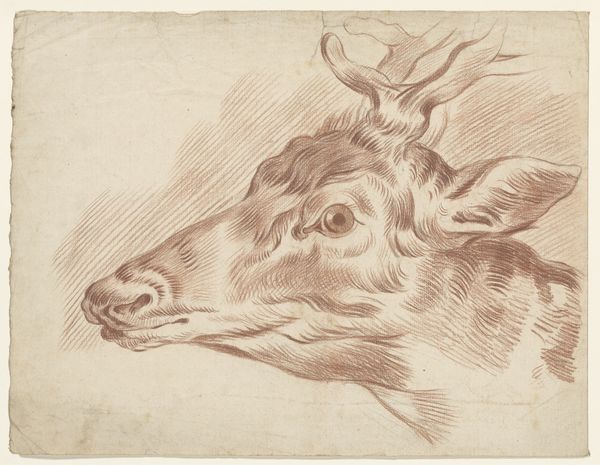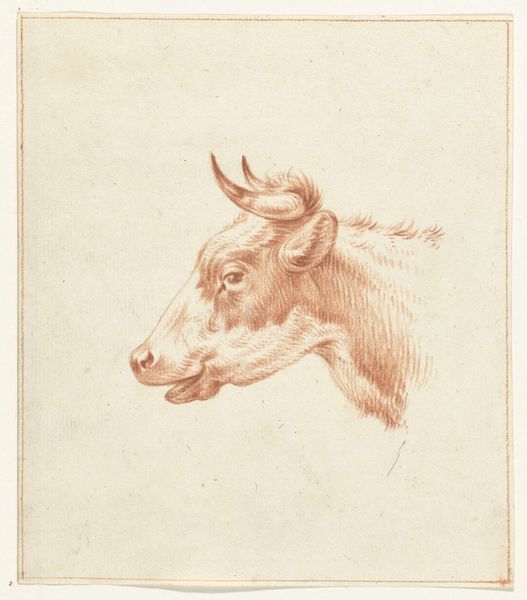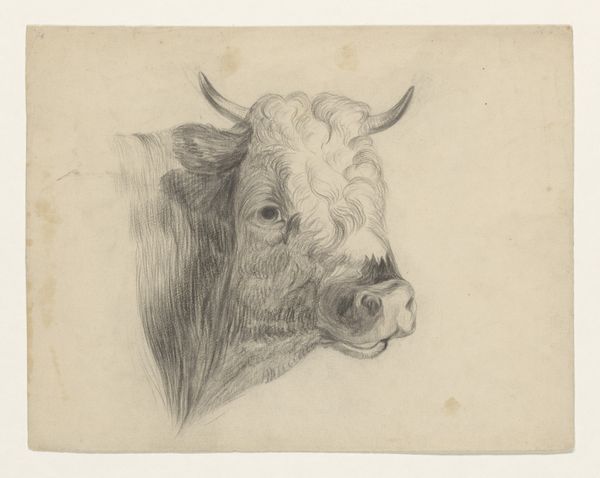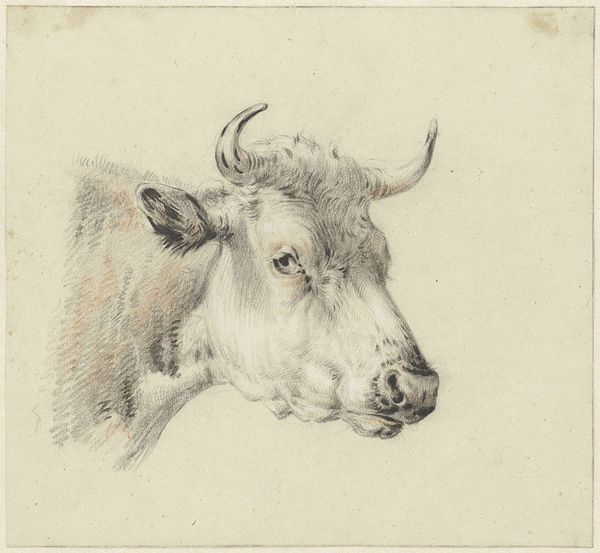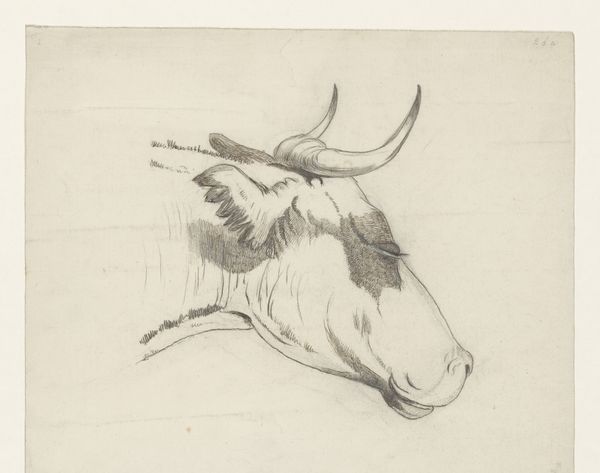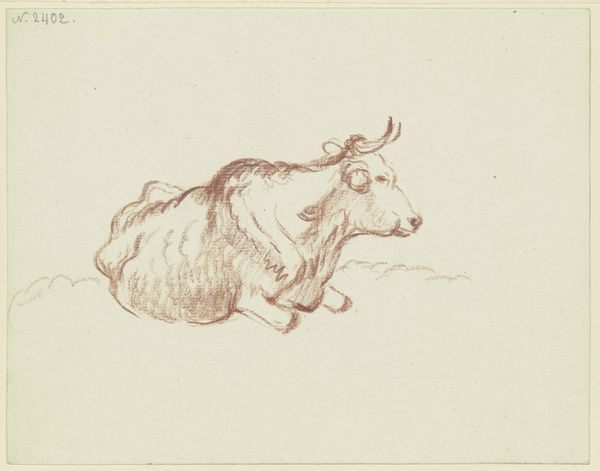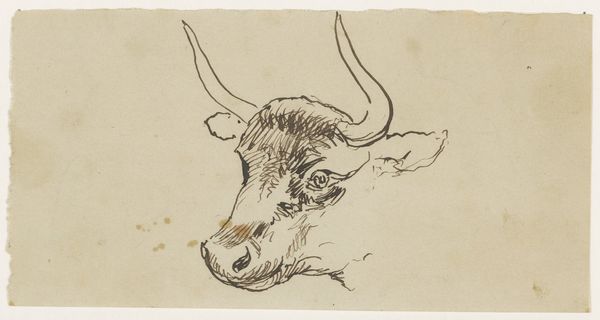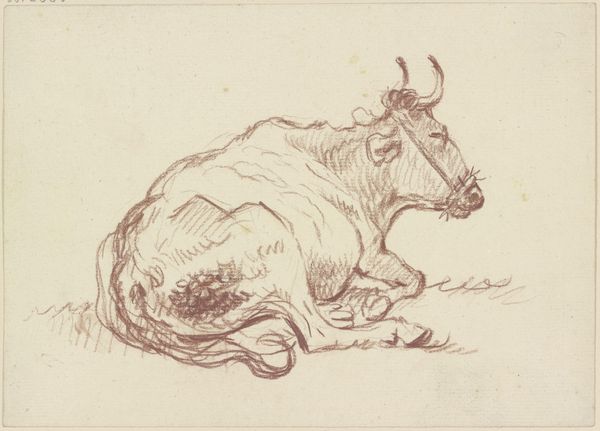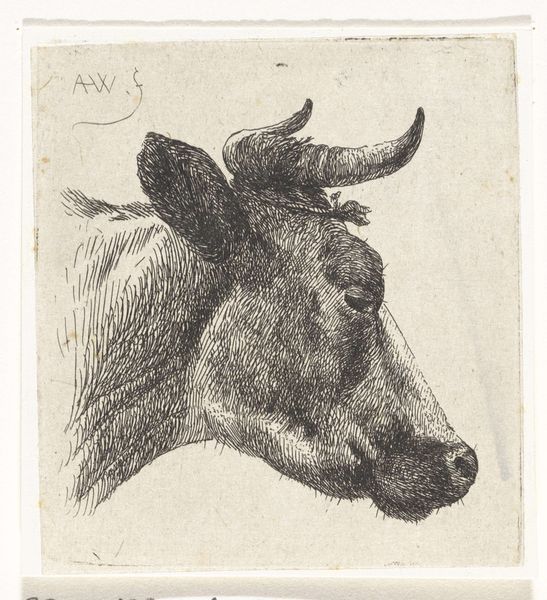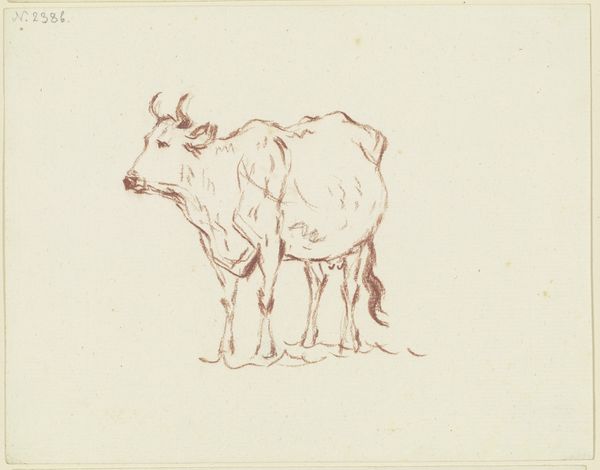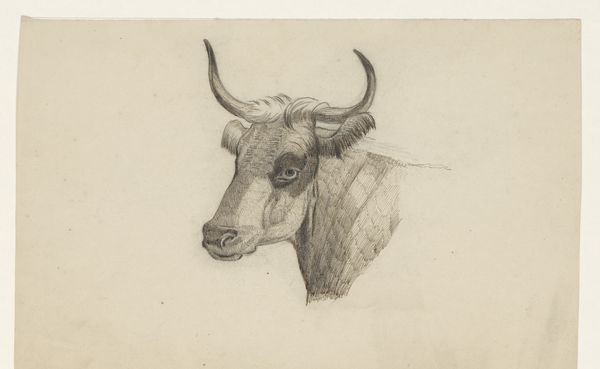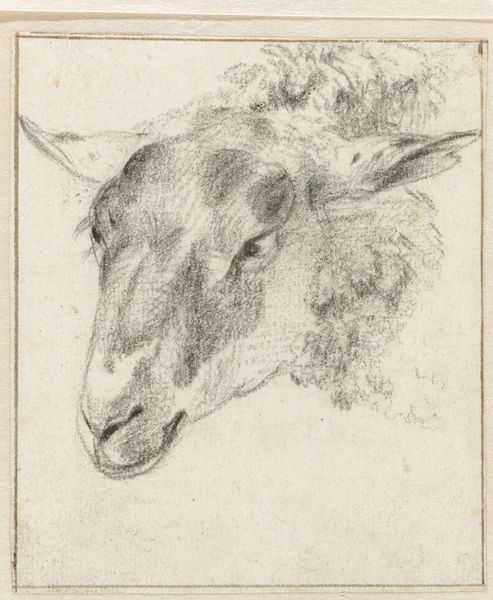
drawing, paper, pencil
#
portrait
#
pencil drawn
#
drawing
#
pencil sketch
#
paper
#
pencil drawing
#
pencil
#
realism
Dimensions: height 286 mm, width 392 mm
Copyright: Rijks Museum: Open Domain
Curator: Johannes Tavenraat created this drawing, titled "Head of a Deer, facing left," sometime between 1819 and 1881. It's rendered in pencil on paper and currently resides here at the Rijksmuseum. Editor: My first thought is stillness. It’s as though the deer has been caught in a moment of complete tranquility, a profound stillness in the wild. Curator: The artist certainly captured a palpable sense of realism. Look at the precision in the lines defining the deer’s form, each stroke contributing to its lifelike quality. It mirrors the larger 19th-century move towards representing subjects with greater fidelity and direct observation. Editor: Absolutely, the realism is undeniable. Yet, for me, the single antler presented makes the deer incomplete, somehow vulnerable. The deer, in some contexts, historically embodies virility and independence. This rendering touches on themes of vulnerability, stripping away certain romantic associations. Curator: An interesting read. Beyond pure representation, deer are powerful symbols, acting as messengers and spirit guides in many cultures, evoking notions of intuition, grace, and the subconscious mind. Deer often stand for a connection to the forest and an appeal to nature’s gentler side. Editor: That gentler side appears so distinctly here in the image's overall palette, creating such a softened affect. It's sepia, almost monochromatic, underscoring an intense emotional concentration and calling attention to the themes of transience, perhaps? It feels quite detached from specific narratives. Curator: Yes, and considering the period, we might reflect on this work within the tradition of animal portraiture, especially within the burgeoning bourgeois culture, when there was growing interest in representing nature’s grandeur within the domestic sphere, a growing enthusiasm that fed into zoology and hunting culture as well. Editor: It leaves me pondering on the delicate balance between observation and imagination and the emotional complexity an image can still elicit after centuries have passed. Curator: Indeed. By closely attending to the artistic legacy embodied in such works, we enhance our awareness and broaden our sense of the interconnectedness of cultures.
Comments
No comments
Be the first to comment and join the conversation on the ultimate creative platform.
